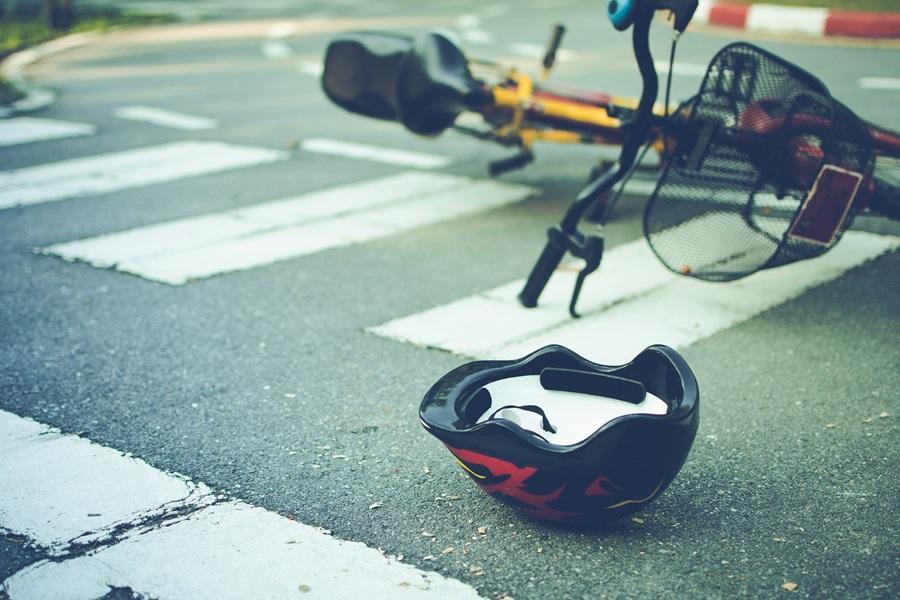While traffic crashes and fatalities have seen a slight decline country-wide, city roads are getting more dangerous for pedestrians and cyclists at large, as revealed by the rising death toll.
There are many dangers lurking in the urban jungle and, according to recent statistics, traffic accidents seem to be among the most prevalent. Last year’s figures reveal a somber reality in this respect with over 44,000 people losing their lives in car crashes across the country. While this represents a 4% decline from 2022, if we compare the numbers to pre-pandemic levels, we get a staggering 13% increase.
The data provided by the National Safety Council (NSC) also shows that the trend differs from one state to another. States such as Iowa, Arizona, Kentucky, and Idaho have registered a spike of 10% or more in traffic fatalities, whereas in other parts of the country, including New York, Georgia, Louisiana, and New Jersey, things have taken a turn for the better, with the number of traffic-related deaths dropping by 10% or more.
One could argue that the situation is not as dire if we look at things from a long-term perspective. Indeed, fatal traffic accidents in the US have decreased considerably over the course of decades, owing to tech advances, and improvements in car safety and road infrastructure. The average rate of motor vehicle fatalities went from 55,000 per year in the ‘70s to 40,000 in the late 2010s.
However, the US is still far from reaching its objective of getting as close as possible to zero traffic deaths. But what’s even more concerning is the fact that pedestrians and cyclists continue to pay the biggest price when it comes to traffic accidents. The situation has gotten so bad that city roads are often seen as death traps for those who decide to walk or cycle.
Pedestrian and cyclist deaths continue to surge
Pedestrians and cyclists have always been among the most vulnerable road users. Unlike drivers, they don’t have a metal shield and advanced safety features to absorb the impact of a collision and protect them. It’s also harder for drivers to spot cyclists and pedestrians when they are in their blind spot, especially in the bustling urban traffic.
This means that both cyclists and pedestrians are more likely to suffer serious injuries or die in the event of a motor vehicle accident, and this is reflected in the numbers. Cyclist fatalities have increased by 25% since 2010, while pedestrian deaths have surged by a whopping 45%. Even in cities like Washington DC where traffic fatalities as a whole have declined, the number of pedestrians and cyclists whose lives are cut short due to road accidents continues to rise. A similar phenomenon is happening in other big cities like New York and Los Angeles.
Unfortunately, the trend is not limited to large metropolitan areas. According to data from the Colorado Department of Transportation, pedestrian deaths in the state hit a new all-time high in 2023, when a total of 131 people lost their lives while simply walking on the street. As for cyclists, the number of fatalities went up by 33%.
In many cases, victims’ relatives or those who are lucky enough to survive such devastating events often seek the assistance of legal professionals such as McDowell Law Firm to deal with the aftermath and claim compensation for the damages they’ve experienced. However, this doesn’t erase the loss or the suffering, nor does it address the concerning issue of rising pedestrian and cyclist deaths nationwide.
What’s behind this concerning trend?
Getting to the root cause of the problem is rather tricky since there are various factors at play here. On one hand, roads are getting busier and drivers are becoming more reckless, although (or precisely because) the cars they are driving are smarter and safer than ever. Driving above the legal speed limit, distracted driving and driving under the influence (DUI) are among the main causes of car accidents in the United States.
Another factor that may have a significant contribution is the fact that most cities in the US, including the suburbs, are built for cars, not for biking or walking. The roads people are traveling on nowadays are designed with bigger and faster cars in mind and with little or no regard for other traffic participants. In most American cities, divers are allowed to turn right on red at intersections while pedestrians are crossing the street.
At the same time, people are encouraged by authorities and health advocates to walk or cycle instead of using their cars. Over the past years, we’ve been hearing all about the health and environmental benefits of making the switch from driving to biking or walking, when possible, but no one warns about the life-threatening risks that come with
It should come as no surprise that in an increasingly car-centric world people often forget to pay attention to pedestrians and cyclists, which much too often results in terrible and sometimes fatal accidents.
Making cities safer for cyclists and pedestrians
As pedestrians and cyclists continue roaming city streets at their own risk, authorities struggle to address this pressing issue. Measures to reduce the incidence of pedestrian and cycling fatalities and decrease traffic accidents as a whole vary widely among cities. For instance, the default speed limit in Boston was reduced from 30 miles per hour to 25 mph, while Washington DC has implemented several policies meant to make the city safer for bicyclists.
Other cities like San Francisco, Cambridge, and Denver have either banned or are considering banning right-on-red turns as a potential solution. Whether these measures are going to bring the expected results remains to be seen, but for now divers need to remember that walkers and cyclists also exist and they have as much right as everyone else to use the city streets safely.






